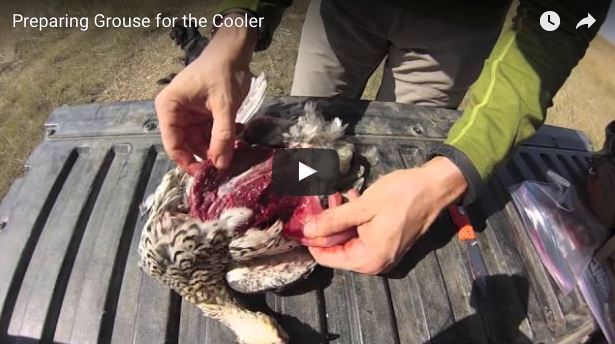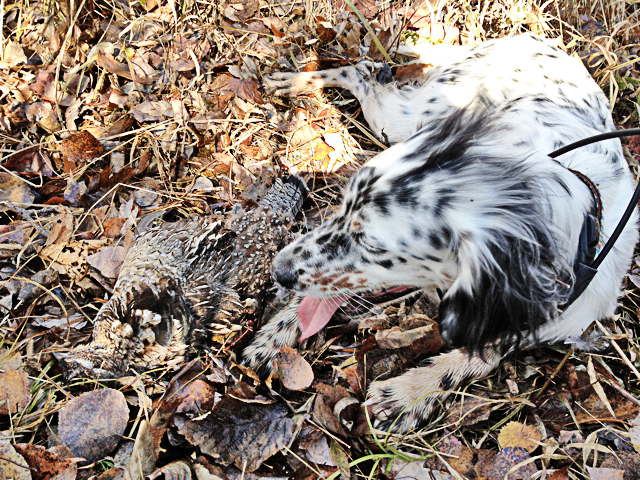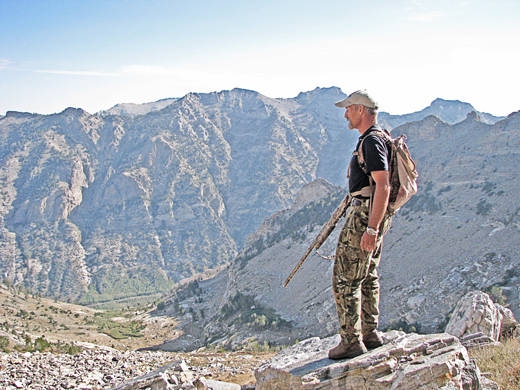
Rio the setter suddenly hits the brakes, sliding to a stop on a steep grade beside an old logging road being reclaimed by the forest. We’ve spent a couple days wandering the hills of West Virginia searching for late-season Ruffed Grouse with no luck. I can tell by her stance, even on this awkward angle, there is a bird here. There’s no style, no high-head, no raised-foot or flagging tail. She’s just one solid muscle strained against the scent of this grouse, the first bird she’s marked in over 20 miles of running. It must be close to her because she won’t even sneak a look in my direction, afraid that even the shift of an eye might spook this elusive foe.
Wyatt the lab has been at my side for the past few miles bored with the lack of bird density. He’s unable to see Rio but notices a change in my demeanor which spurs him to double-time. I’m curious the tell he has picked up, though I suspect he spies my second hand move to grip the shotgun and thumb the safety. Whatever the clue, it’s rooted in the same assurance I have with Rio’s stance. We’ve seen this thousands of times before. We know what this looks like and it never gets old. I’ve tried for years to coach myself to not tense up. Stay loose and shoot better, right? And yet I’m still holding my breath, I still have butterflies.
We’re new to this area. Whenever we try finding birds in new spots I work down a mental checklist generated from other bird chasing experience. One item always on that checklist is talking to locals. Anyone we come across willing to engage in conversation about upland birds or dogs can help solve the equation of where birds reside. It doesn’t appear that many people chase birds in this area because the words “grouse” and “partridge” are met with blank stares, as if a foreign tongue. Even the outdoorsmen here fishing in unseasonably warm weather seem unaware they encroach on the realm of the King of the Woods.
The winter forest can appear flat and homogenous. Much of the color and highlights associated with other seasons is gone. That mental checklist has us probing different elevations looking for edges. Guessing why birds are lacking in an area, then looking for the solution to that issue in other areas. There’s a method to our late-season upland madness. But for all the thought and strategy, it’s not what has brought us to Rio’s point.
Evenings I pour a couple fingers of wisdom into a cheap plastic motel cup and pour over maps detailing 900,000 acres available to hunt in this National Forest. We can’t cover all that in even a dozen weeks. I look for cuts, different ages of forests where timber has been harvested or burns. The areas we’ve hiked so far have been dry and there’s very little snow on the ground. I decide we’ll try hunting creeks or culverts that should provide a water source.
I notice a name on the map I recognize, not from any intel or hunting journal. There’s a tiny tributary that shares my grammie’s name. She was an opinionated old bird who loved the dogs and stories of wild places. But she hated the hunting. Luckily she wasn’t above bribery and a few tail feathers from a recent trip would keep an uneasy accord. The name of that creek is an omen and I know regardless how the terrain looks, it could be a parking lot, we’re hunting there. How this level of superstition nullifies what I want to believe is some level of skill, I’m unsure. But the maps folds cooperatively and I tuck in for a night’s sleep untormented by indecision.
And now Rio is locked down a few yards above Grammie’s creek. Wyatt homes in on a spot at the base of a large fir as I shift to one side trying to predict a flight path. But late-season birds rarely allow you to guess right. I see a brief flash of a white, more blur than form. Faster than I can fully mount the gun, I shoot as positive reinforcement for the dogs. But there’s no way a single pellet has penetrated the evergreen shield this grouse threw between us.
Grammie would be happy with that outcome. And truthfully I am too. The deeper into the season we get, the more I root for the upland birds. I want to be proficient and deadly, no doubt. I want to be challenged by the conditions and educated birds and be able to overcome that with the dogs. But even more I want the birds to show us how they’ve made it this far and that no checklist or level of supposed proficiency is going to foil survival.
The dogs are reenergized as we turn back the quiet path to the road. Maybe there will be another omen on the map. And hopefully the birds continue to beat us.










Just lost my 11 year old GSP, Sam. Looking at puppy pictures encourages my heavy heart. I am still amazed at how seeing puppies, whisks me back to my youth. My father has been an avid quail hunter since the early 60’s, when he introduced me to bird hunting. Bird dogs have been an integral part of my life since early childhood, yet I have been reluctant to invest myself into another puppy at age 67. I believe reading your story has been the catalyst necessary to get me back in the game. Thank you.
Sorry to hear about your GSP, great dogs. You’ve still got time and too much knowledge to give up at 67. Jump in Steve… maybe just on a breed with a bit shorter legs.